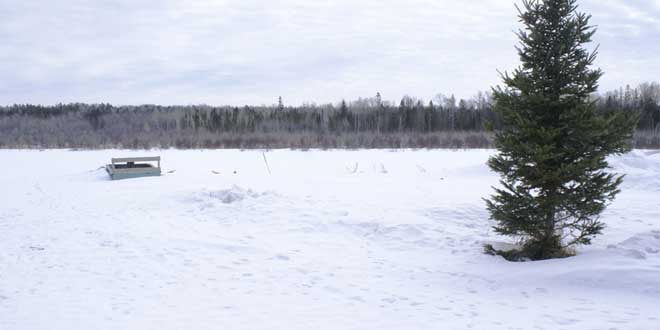TEHKUMMAH—Somewhere in Tehkummah there is an empty field. The owner points through his window. “That’s where I’d like to put it,” he says, “but we haven’t worked out all the details yet.”
“It” refers to a medical marijuana production facility. In February, the farmer (who has asked to go unnamed in this article) notified Tehkummah council that he would be submitting an application to Health Canada under the new Marijuana for Medical Purposes Regulations (MMPR). The regulations “change the way Canadians access marijuana for medical purposes by creating a system of supply and distribution by licenced producers regulated by Health Canada.” Producers will be subject to security requirements, inspections, and good production practices. All existing authorizations to possess (ATPs) and licences to produce expire on March 31.
There are two partners in this venture, including the farmer, but there may be others. “There’s one model we’re looking at,” says the farmer. “It would be a small start-up, that would allow us to grow and evolve. We could use some profits in a couple years to make it bigger. There would have to be a new building.” He notes that the facilities approved to date have significant production levels. In Saskatchewan, he says, “there’s millions of dollars invested. We can’t do that now, but potentially.”
As of March 25, 2014, Health Canada has received more than 600 applications from across the country for licences to produce marijuana for medical purposes. Only 12 have been approved to date, with most of those in the Toronto and Vancouver areas.
This application hasn’t been submitted yet. The target date is the end of March, but they could “push that a bit” if necessary. “There’s a lot of documentation,” the farmer says. He’s heard of an application from British Columbia that contained over 250 pages. “There needs to be inspections and security clearances from the RCMP.”
He thinks for a moment about exactly what details he can reveal about their plans. “We’d grow in soil, not hydroponics,” he says. “We’d start the plants under lights then move some into greenhouses.” He pauses, thinking, then looks directly at this reporter. “It would be like an indoor lab environment, clean,” he continues. “It’s indoors, not intrusive. It’s secure.” He doesn’t feel the facility would be very noticeable to passersby.
The business model is based on online sales, and customers will have to have a prescription before ordering. According to Health Canada, “individuals will be allowed to use either their valid Health Canada-issued authorization to possess (ATP) or a medical declaration signed by their physician, valid for one year after signature date, to register with and place an order for dried marijuana from a licenced producer.”
The farmer tells me that most of the security involved is in storing the finished product. The storage area, as well as the growing area, has to be monitored on camera. The system has to have a good emergency back-up system in case the power goes out. “You can’t have gaps in your recording.”
In fact, the security measures are extensive and include visual monitoring at all times with video recording devices. There are physical barriers needed and detailed record keeping and mitigation requirements. All areas within a site must be equipped with a system that filters air to prevent the escape of odours and pollen. In addition to these requirements, applicants must provide written notice of their intent to local government, police and fire authorities, which has been done.
It’s not clear how long the application process will take, however. “Every company is different,” says Health Canada spokesperson Sara Lauer. “There’s not a real time frame.” They look at every application “case by case.” She refers to the guidance document, Application to Become a Licensed Producer under the Marijuana for Medical Purposes Regulations. Considerations include personnel, security clearances, safety of the site, physical security, ownership, and specific activities involving marijuana.
They’ll have their work cut out for them if the farmer’s empty field is the proposed location. Health Canada confirmed that the site facility and security measures must be in place before an application moves forward.
If the application is rejected, the partners will be able to re-submit once they have fixed the issue they were rejected for in the first place. If that doesn’t work, there is a back-up plan but “it’s speculation. Maybe we could try hemp as a demonstration crop until we get some experience.” But they are serious about their plan. “It’s not a get rich quick scheme,” the farmer says. “It’s a lot of work.”




